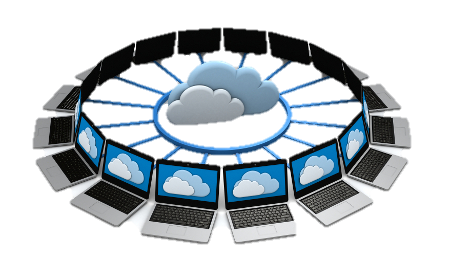
Most client management and workspace management tooling today still relies on complex, on premise, implementations and needs full time employees for management. The result: high adoption rates in organizations with thousands of employees but smaller organizations lacking knowledge, money and time to implement and use these solutions, are stuck with manual labor for software distribution, patching and support.
A second challenge with these traditional solutions is their ineffectiveness to manage mobile notebook users. Notebooks need to be connected to the corporate network to install new software and updates or receive support, resulting in large accumulations of software and patches to be installed when a rare connection is established.
The most logical answer to these challenges is an easy to use solution that provides workspace management and application distribution as a service. We did some major changes in the Scense architecture delivering just that: Workspace Management and application distribution functionality via the Internet. The result is Scense 8.
Gartner’s Terrence Cosgrove wrote a good paper on this subject: “SaaS Client Management Tools Fit Some Scenarios, but They’re Still Incomplete” (dated 23 August 2012). Although he states this market is still immature, he discusses some scenario’s that should be considered as a use case for SaaS client management tooling. These scenarios are interesting to us because they can be addressed today by using Scense 8.
- Small or midsized businesses (i.e. fewer than 1,000PCs) that have struggled with traditional, on premise, tools. These businesses don’t need the full spectrum of functionality available in traditional solutions but could do with inventory, patching, software distribution, software usage monitoring, remote control and security configuration management.
- Large organizations should, according to Terrence, consider these types of solutions complimentary to their existing client management tooling. As an example he mentions patching and remote control for mobile notebook users.
- Organization that deal with multiple mergers and acquisitions. It is very hard to integrate PC’s on different domains in existing client management tools. SaaS tooling results in immediate management of these new PC environments.
Terrence also mentions the added value of SaaS client management tools in addition to client side virtualization solutions. These solutions lack full life cycle management functionality and could benefit from a SaaS client management tool.
Terrence’s paper was a very good read and also strengthens my belief that we are heading in the right direction by launching Scense 8. The increase in mobile users, Consumerization of IT and concepts like BYOCYO need a service oriented approach to IT management. Scense 8 is future ready.


